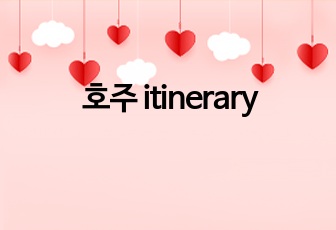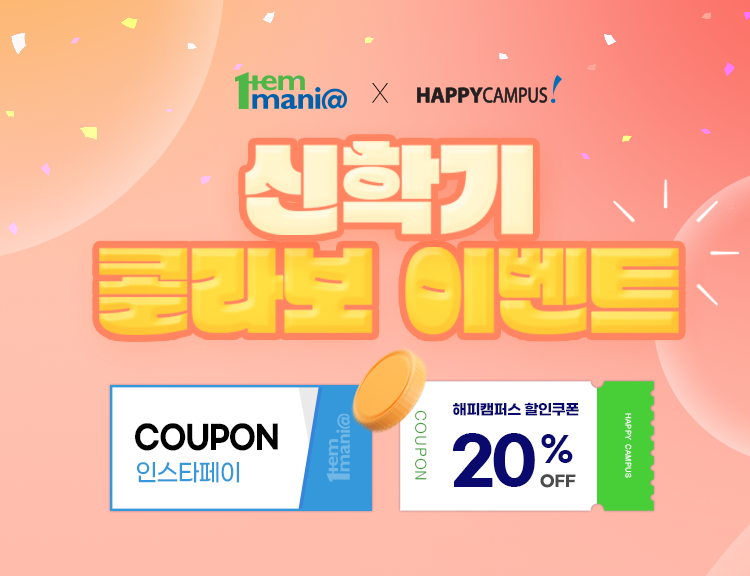THE ROLE OF LUXURY BRAND ATTACHMENT ON CONSUMER BRAND RELATIONSHIP
* 본 문서는 배포용으로 복사 및 편집이 불가합니다.
서지정보
ㆍ발행기관 : 글로벌지식마케팅경영학회(GFMC)
ㆍ수록지정보 : GFMC Session1
ㆍ저자명 : Anwar Sadat Shimul, Michael Lwin, Ian Phau
ㆍ저자명 : Anwar Sadat Shimul, Michael Lwin, Ian Phau
영어 초록
This study aims to investigate the role of luxury brand attachment on consumer brand relationship by examining the relationship with trust, commitment, satisfaction and loyalty. This also examines the interrelationships among trust, commitment, satisfaction and loyalty from luxury branding context which provides a good number of theoretical and practical implications.Introduction
The global luxury market exceeded $1 trillion in the year 2015 with a 5% annual growth (Bain & Co., 2015). However, industry experts predict that the luxury industry will face challenges in upcoming year primarily due to the economic instability and turmoil in the global foreign exchange market (Robert, 2015). Therefore, the luxury brand executives should carefully target their future consumer segment to sustain the current growth (Luxury Society, 2015). Earlier studies demonstrate that consumers seek various types of emotional benefits from luxury brands such as status seeking (Nelissen & Meijers, 2011), hedonic pleasure (Tsai, 2005), feeling good (Aaker, 1999), pleasurable experience (Atwal & Williams, 2009), mental peace (Silverstein & Fiske, 2003), and impressing others (Wiedmann, Hennigs, & Siebels, 2009). Moreover, these emotional benefits create a comprehensive and memorable experience in terms of ownership and consumption of luxury brands (Choo et al., 2012). Therefore, luxury brand marketers should emphasize more on emotional attachment for building a long term and sustainable customer relationship (Orth et al., 2010).
Research Gap
Existing literature on consumer-brand relationship mostly considers cross-cultural issues (Chang & Chieng, 2006), reviving brand loyalty (Fournier, 1997), consumer attitude (Aggarwal, 2004), satisfaction (Sung & Choi, 2006), self-brand connection (Cheng et al., 2012), trust-based commitment (Hess & Story, 1995) and such other dimensions on brand evaluation (e.g. Swaminathan et al., 2007). Few studies have considered luxury products (Hodge et al., 2015) and the role of emotional aspects (Hwang & Kandampully, 2012) in the consumer-brand relationship. Still, there is a lack of empirical support for understanding the role of luxury brand attachment into the construct. This research will attempt to fulfil these research gaps.
Conceptual Model and Hypotheses
Psychological theories explain attachment as the tie between a person and an object or any other components (Bowlby, 1979; Hazan & Shaver, 1994). Brand attachment is defined as a long-term and commitment oriented tie between the consumer and the brand (Esch et al., 2006). The conceptualization of luxury brand demonstrates that the inherent traits of luxury brands are distinctiveness, high transaction value, superior quality, inimitability, and craftsmanship; and luxury brand consumption is mostly emotion laden (Nueno & Quelch, 1998). Based on the existing attachment concepts and theories, we define luxury brand attachment as the emotional bond that connects a consumer with a specific brand and develops deep feelings toward the brand.
Several past studies have found that brand attachment reinforces brand trust and there is a positive relationship between brand attachment and trust (e.g. Belaid & Behi, 2011). In addition, Esch et al. (2006) argue that brand satisfaction and brand attachment are interrelated and satisfaction results long-term consumer-brand relationships (Gladstein, 1984). Moreover, strong commitment from the consumers has been identified as a critical factor of long lasting brand relationship (Li et al., 2014; Sung and Choi, 2010). Further, Thomson et al. (2005) find that brand attachment creates behavioural loyalty for which consumers are also willing to pay higher prices. Expecting similar relationship from luxury branding context, we propose that
H1: The higher the luxury brand attachment, the greater the consumers trust in that brand.
H2: The higher the luxury brand attachment, the greater the consumer satisfaction for that brand.
H3: The higher the luxury brand attachment, the greater the consumer commitment to that brand.
H4: Higher luxury brand attachment leads to higher behavioural loyalty to that brand.
Scholars explain that satisfaction is an essential element of brand loyalty and both the constructs are positively related (e.g. Agustin and Singh, 2005). Past researches find that highly satisfied consumers demonstrate repeat purchases (e.g. Bennett et al, 2005). Past studies also show that trust toward the brand results brand loyalty and strengthen the relationship (Bansal et al., 2014; Belaid & Behi, 2011). Fournier (1997) identify brand trust as the key determinant of brand loyalty. Thus, we propose that
H5: Higher satisfaction to the luxury brand leads to higher behavioural loyalty to that brand.
H6: Higher trust to the luxury brand leads to higher behavioural loyalty to that brand.
Ganesan (1994) argue that a satisfied customer develop trust toward a specific brand. In support of this, Belaid & Behi (2011) state that if a brand becomes successful in fulfilling the promise with consistence performance, the consumer will have satisfaction and positive feeling about the brand. In addition, the authors find a positive relationship between brand commitment and behavioural loyalty. Expecting similar relationship from luxury branding context, we propose that
H7: The higher the trust in luxury brand, the more customer satisfaction in that brand.
H8: Higher commitment to the luxury brand leads to higher behavioural loyalty to that brand.
Summary of the hypothesised relationships are illustrated in Figure 1.
Methodology
The simple random sampling will ensure proper representation of the target population and eliminate the sampling bias (Cook & Campbell, 1979; Zikmund, 2002). The sample population will be 300 young Australian consumers aged between 20-30 years. Previous studies have found that there is a growth in luxury brand purchase by individuals in younger age groups e.g. 20 – 30 (Hung et al., 2011). Therefore, this is representative of the possible drift in the ages of consumers in the market for luxury brand purchase (Han et al., 2010). A consumer panel from Qualtrics database will be used and the sample frame consists of consumers who have higher brand likeability (Martin & Stewart, 2001).
Established scales will be used to measure the constructs. All items will be measured on a seven-point Likert scale with 1 representing “strongly disagree” and 7 representing “strongly agree”.
Research Significance
This would be the very first study to investigate the role of luxury brand attachment in consumer brand relationship. This research will provide meaningful insights for the brand managers, brand strategists and advertising managers. This research will assist luxury brand managers in allocation of resources for the action plans that will ensure a stronger tie with the consumers in a cost efficient way. For brand managers luxury brand attachment may help them with segmentation process and well as providing direction on improving attachment to the consumers to influence trust, commitment, satisfaction, and loyalty.
참고 자료
없음"GFMC Session1"의 다른 논문
 FAST AND SLOW FASHION BRANDS IN DEVELOPING SUSTAINABLE ..6페이지
FAST AND SLOW FASHION BRANDS IN DEVELOPING SUSTAINABLE ..6페이지 “WHAT IF A CELEBRITY AND A BRAND CO-CREATE A NEW COLLEC..7페이지
“WHAT IF A CELEBRITY AND A BRAND CO-CREATE A NEW COLLEC..7페이지 THE INSTAGRAM’S STRATEGY IN ENGAGING THE CUSTOMER’S LOY..3페이지
THE INSTAGRAM’S STRATEGY IN ENGAGING THE CUSTOMER’S LOY..3페이지 THE PARTICULARITIES OF NEW PRODUCT DEVELOPMENT IN THE T..5페이지
THE PARTICULARITIES OF NEW PRODUCT DEVELOPMENT IN THE T..5페이지 THE LONE CHOCOLATE BAR: THE INFLUENCE OF PERCEIVED SCAR..6페이지
THE LONE CHOCOLATE BAR: THE INFLUENCE OF PERCEIVED SCAR..6페이지 ADS AS WORKS OF ART: MEASURING ADVERTISING IMMERSION3페이지
ADS AS WORKS OF ART: MEASURING ADVERTISING IMMERSION3페이지 ECONOMIES OF SMALL: NICHE STRATEGIES AND SUCCESS FACTOR..8페이지
ECONOMIES OF SMALL: NICHE STRATEGIES AND SUCCESS FACTOR..8페이지 THE INFLUENCE OF ONLINE CUSTOMER REVIEWS ON RETAILERS' ..6페이지
THE INFLUENCE OF ONLINE CUSTOMER REVIEWS ON RETAILERS' ..6페이지 IS THE ARTIFICATION PROCESS PERCEIVED BY FINAL CONSUMER..6페이지
IS THE ARTIFICATION PROCESS PERCEIVED BY FINAL CONSUMER..6페이지 THE ODD EVEN PRICE PARADOX IN THE FASHION LUXURY SECTOR6페이지
THE ODD EVEN PRICE PARADOX IN THE FASHION LUXURY SECTOR6페이지


















